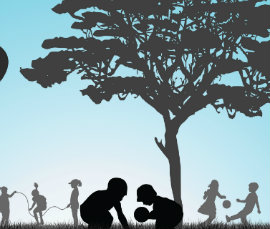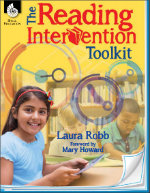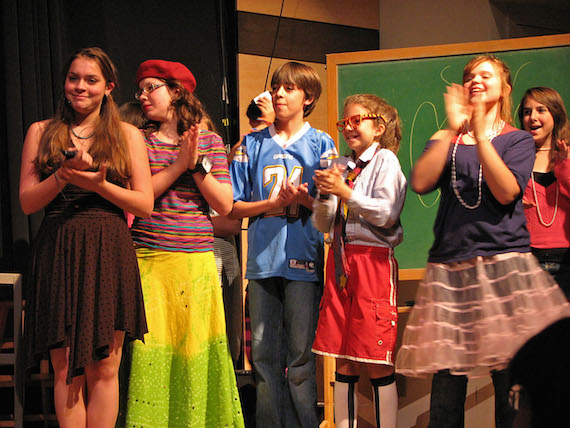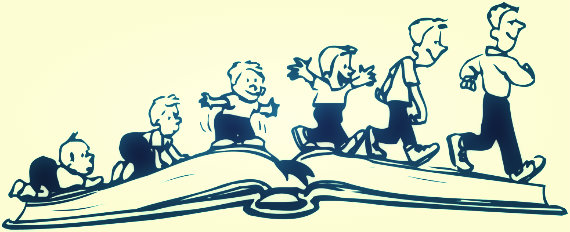10 Motivators to Promote Playful Learning

My four-year-old granddaughter Helena and I are alternating skipping and walking on a warm, sunny June day on the sidewalks of Winchester, Virginia. We stop to look closely at a parade of ants marching on the sidewalk and listen to a redbird singing in an oak tree.
Helena is full of questions. Why aren’t mushrooms green like plants? Why do worms stay under the ground? Suddenly she stops, looks up at me and says: “I’m never going to school!” When I ask her why, she says, “Because my brother [in second grade] comes home and it’s homework every day.”
“What will you do if you don’t go to school?” I ask.
In response, Helena spreads her arms out wide and skips around me, shouting again and again, “Play! I’ll play!”
The sorry state of play
Helena, like all young children who play to learn, use their five senses, raise questions that stimulate their imagination, and continually take risks to better understand their environment. However, in kindergartens today, time for play as a way of learning has decreased over the last two decades in favor of explicit instruction on literacy. The ripple effect across the upper elementary and middle grades is profound.

Instead of improving reading instruction in middle and high school to raise our standing on international and state tests, those educators believe that by teaching much younger children reading skills, their scores will soar in later grades.
As Christakis notes in a recent article in The Atlantic, even preschool programs have reduced time for play in favor of explicit instruction in reading and math. Instead of the social interactions and explorations that are a hallmark of play in early education, in many preschool settings young children sit in seats and complete worksheets that drill phonics and sight words. Gone are the easels, gone are the water and sand tables, and gone are the dress-up centers for pretend play.
What we risk when we eliminate play
Yet, imaginative play and the exploration of concepts (such as why snakes slither and how seeds germinate) have cognitive and emotional benefits to young children that develop their creativity, abstract thinking, imagination, and problem solving abilities.
At the same time, play develops children’s self-confidence, their ability to cooperate, share, and listen to one another’s ideas. With reductions in time for play as a way of learning in favor of “skill and drill,” I fear young children won’t realize the cognitive and emotional benefits of play, which will ultimately affect their ability to imagine, innovate and problem solve in the middle grades and high school.
Play is important at every development stage
Some of the greatest educational researchers and philosophers—John Dewey, Jerome Bruner, Lev Vygotsky, and Jean Piaget—promote play as important for social development, learning, and bridging children’s imagination to reality. Moreover, as far back as 346 B.C.E., the Greek philosopher Plato wrote in Laws that play is a child’s preparation for a future career.
Friedrich Froebel, the German educator who developed kindergarten for boys and girls, agreed with Plato when he explained that a man’s later life has its roots in childhood play (The Education of Man, 1887). For me, children of all ages, not just preschoolers, explore and learn about their world, through play.
To prepare students for college, career, and a meaningful and productive adult life, teachers need to incorporate playful learning that engages and motivates elementary, middle, and high school students. Integrating playful learning into core subjects such as reading, writing, math, science, and social studies can ramp up students’ academic achievement while making learning relevant to their lives.
Teachers in the middle grades are generally not a position to address the issues of play in preschool and elementary. But they can integrate what I call the “Big 10 Student Motivators.” These strategies encourage playful learning, can boost students’ innovative thinking and problem-solving skills, and at the same time engage students in reading, writing, researching, discussing, and analyzing materials in all subjects.
The Big Ten Student Motivators
-
- Providing choice in independent reading, writing topics, and projects makes students feel invested in tasks and develops their responsibility and independence in learning.
- Collaborating to learn invites students to work in pairs and small groups, share ideas, value diverse thinking, and become active listeners who respect one another’s thinking. Collaboration enables students to develop open-ended discussion questions, plan and execute projects, study for tests, evaluate websites and other sources, have literary conversations, and pool research. And, of course, collaboration invites play.
Integrating meaningful talk makes learning social for a communicating generation in which FaceTime, Twitter, and texting are commonplace. Meaningful talk can happen with partners, small groups and the whole class. During student-led talk, teachers become facilitators who enter a discussion to periodically summarize points or jump-start a stalled conversation by posing a question.
- Problem solving asks students to be generative thinkers, coming up with a variety of possible solutions to school and community problems and problems related to topics they’re studying. For example, a fifth grade unit on friendship transforms into problem solving when students self-select and read a variety of texts and then collaborate in small group to compose a pamphlet on what makes friendships work and what derails them. Moreover, choice enables students to select materials from which they know they can learn.
- Inquiry learning invites students to ask the questions they’ll discuss and/or research for a topic, project, or unit of study. Inquiry learning is social because it requires students to collaborate and support one another. By sharing ideas, they learn to value the diverse thinking of peers. During an inquiry study, students gain control over their learning, develop opinions on topics, and gain a fluency and flexibility in analytical thinking.
- Encouraging risk taking creates an environment in which students feel comfortable making mistakes and even failing. Students who can take risks without fear of criticism from their teacher and peers can become better problem solvers and creative thinkers. In a comfortable and safe space, they can learn from their mistakes.
- Unlocking creativity occurs when students are put into a situation in which they can think about and create ideas in their own unique ways. Students who think creatively have multiple ways to solve a problem, or interpret a story, painting, or movie. At school student-centered approaches to learning such as collaboration, inquiry, and student-led discussions encourage creative and innovative thinking.
Developing empathy means that students can step into the shoes of others, understand life as they do, empathize with their problems, and share their joys. Social interactions, collaborations, and reading about and watching videos and movies about other cultures and ways of life other than their own develop and expand students’ ability to empathize. In a student-centered, culturally diverse classroom, empathy leads to understanding, respecting cultural differences, and developing social responsibility.
- Teacher-student negotiating fosters independence in learning as students and teachers become co-decision makers for setting deadline dates and suggesting projects, test formats, test questions, and the amount of assigned homework.
- Going out for recess, enjoying time to play outside, recharges elementary and middle school students’ learning batteries so they can concentrate. Yet many elementary and middle schools have reduced or eliminated recess in favor of more time for reading, writing, and math. In addition, five-minute brain breaks should occur after students have focused deeply for thirty minutes. Students can stretch, move around, chat with friends, and use their renewed energy to concentrate again.
Some playful closing thoughts
The Big 10 Student Motivators are skills for the 21st century and beyond—skills valued and used by government agencies, corporations, universities, small businesses, and school districts that depend on members to know how to collaborate as they solve problems, develop policy, generate an abundance of ideas, and respond to issues and events.
Learning begins with play. If students of today are to become the innovators and problem solvers of tomorrow, then schools need to respond to the call of play in all grades.
________________





 Developing empathy means that students can step into the shoes of others, understand life as they do, empathize with their problems, and share their joys. Social interactions, collaborations, and reading about and watching videos and movies about other cultures and ways of life other than their own develop and expand students’ ability to empathize. In a student-centered, culturally diverse classroom, empathy leads to understanding, respecting cultural differences, and developing social responsibility.
Developing empathy means that students can step into the shoes of others, understand life as they do, empathize with their problems, and share their joys. Social interactions, collaborations, and reading about and watching videos and movies about other cultures and ways of life other than their own develop and expand students’ ability to empathize. In a student-centered, culturally diverse classroom, empathy leads to understanding, respecting cultural differences, and developing social responsibility.





























I am teaching Kindergarten and I agree wholeheartedly with this article. You only have to see the engagement of contestants on game shows to see that we learn through play all through our lives.
It is great to see this article on a Maths site because maths is usually the most fun!